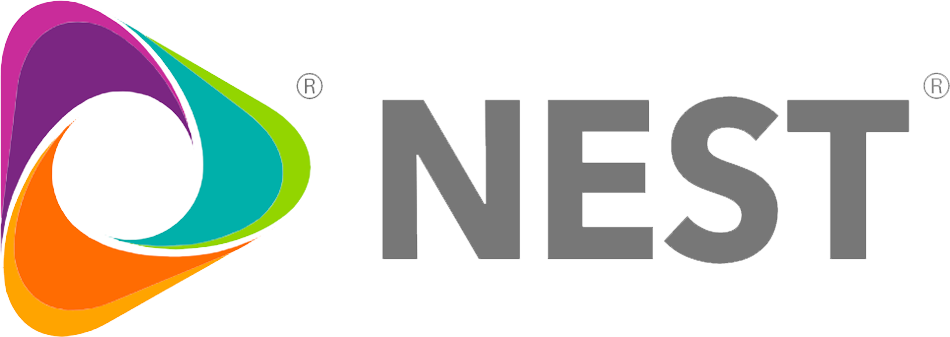If 2020’s unprecedented economic disruption taught us anything, it’s that agility in the face of changing market conditions—whether pandemic-induced or not—can be the difference between shutting down and thriving.
For small and medium-sized businesses, and enterprise-level brands with large numbers of facilities and assets, this is especially true. In today’s fast-paced business environment, facilities management (FM) workflows must be optimized across time, labor, and equipment not only to address day-to-day work order management, but to adapt in the face of accelerated, and often unexpected change.
Ideally, your work order management software should support these efforts by providing the right data at the right time, to be leveraged with speed in the short term, and to inform your company’s longer-term strategic initiatives.
That said, navigating among the multitude of work order solutions available can be dizzying. To help identify the best work order management software for your business, here is a brief primer on what to consider. Take a look.
What Type of Work Order Management Software Does Your Business Need?
The best work order management software for your business may not be what you think. In general, it comes in two forms:
- A stand-alone, basic work order distribution system. This is primarily designed to assign, track, and record work orders. Standard data and reporting are included, though other features and customization tend to be limited. There is little, if any, integration with existing business systems.
- A computerized maintenance management system (CMMS). This is a more comprehensive solution that is wider in scope, includes a full range of features and customization, and importantly, typically interfaces with your organization’s existing business systems. Integration leverages CMMS data and analytics to drive operational efficiencies, improve productivity, and inform budgeting and planning.
Both forms can include additional features, or are in themselves, specifically designed for organizations with large field service components. These software solutions might include capabilities such as converting tickets into billable invoices, invoice management, GPS, and in-field file sharing.
For smaller companies with simpler workflows, the stand-alone option might seem attractive, but limits in customization, data integration, and insights can confine FM in these cases to its traditional, more reactive function. Many stand-alone solutions are also built with legacy software, and in today’s ever-changing commercial landscape, you might find that you outgrow a stand-alone platform sooner than you think.
Alternatively, NEST’s CMMS offering, called Facilitate, is a scalable, intuitive, browser-based application that is part of its Integrated Facilities Management (IFM) solution. The software provides customized, end-to-end work order management, as well as actionable business insights that drive cost savings, inform overall program spend, and assist in long-term financial forecasting. NEST’s CMMS software is designed to leverage FM as part of a company's strategic planning.
How Does Pricing Work?
Costs will vary, but for a stand-alone program, pricing will typically include some combination of per user/location/month charge. Depending on the number of users and scope of the work order software, this can range from around $20-50/per user per location, per month. In addition to technology charges, when your FM program is of the legacy hourIy model, ISPs will charge by the hour, which can get expensive with overtime and emergency calls.
In addition, whether the software is a stand-alone or CMMS system, ISPs are often charged for using the work order platform, a cost typically passed on to the user. Also, so-called “tech fees,” charged for the ongoing development and maintenance of proprietary software, are often added to the user’s monthly expenses. Customization and upgrades, to the extent they are available, can also increase costs.
Many integrated CMMS solutions, due to their enhanced functionality and comprehensive frameworks can cost several thousands of dollars per month but often use a similar per user/month pricing model.
Integrated FM providers such as NEST, however, deploy a total cost approach, which projects expected needs and contingencies over an annual or multi-annual period for a single cost. Since all services are included (no additional or hidden fees are tacked on) and are priced via negotiated scaled rates, cost control and budgeting are considerably more efficient. Furthermore, opportunities to incorporate preventative maintenance and other proactive FM strategies can be identified to maximize meaningful cost-savings across your entire fleet.
Key Work Order Management Software Features to Consider
Regardless of the type of company you run, the best work order software for your business should help drive operational efficiencies that improve productivity, better enable rapid response, and put your organization on a strategic footing going forward.
Features to consider include:
- Automation of your work order workflow. From creation to assignment, to progress tracking and beyond, your work order software should make this process simple to use, easy to manage, and accessible to the whole team.
- An intuitive dashboard that allows for customization, user notes and attachments, easy engagement with ISPs, and real-time data and insights. FM spend should be viewable by priority, provider, location, trade, category, or other filters.
- A robust ISP database that’s vetted and sortable by specialty, performance, completion rate, service areas, up-to-date compliance and insurance status, and more. The search function should be easy to follow and efficient.
- Mobile access integration to view assignments, status checks, and alerts from anywhere. Relatedly, a contractor-initiated work order process from onsite is also a must-have for reducing spend and equipment downtime.
- An asset management database that includes history, notes, photos, programs, and warranty information. Avoiding delays in determining warranty-eligible repairs saves critical time and labor better deployed elsewhere—and saves money.
- Comprehensive and on-demand program-cost reporting that includes robust analytics and actionable data to inform budgeting, financial planning, and strategic decision making.
The Benefits of a Comprehensive FM Integrated Solution
NEST’s Facilitate includes these features as well as other components that comprise its holistic IFM solution. For example, other benefits include:
- Operational support from a dedicated account team familiar with your specific FM needs and history.
- An in-field quality assurance team that ensures brand standards are met.
- Financial reporting and analysis through a dedicated FP&A team.
- Selected customization and upgrades to meet your specific FM requirements.
- Zero added or hidden subscription fees.
In short, NEST is the strategic IFM partner managing today’s FM issues and preparing you for tomorrow’s business challenges.
Contact NEST today to discuss your work order management software needs and how our Integrated Facilities Management solution may be the best work order management software for your business.
Advance Your FM Program to the Next Level
This free ebook outlines the 5 most important pieces to unlocking the full potential of an integrated facilities management program.
Download Now


